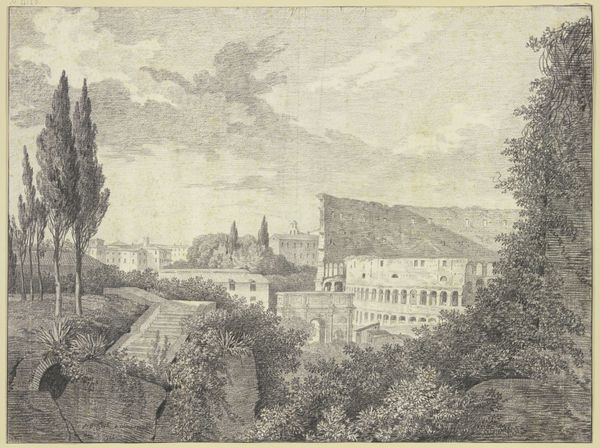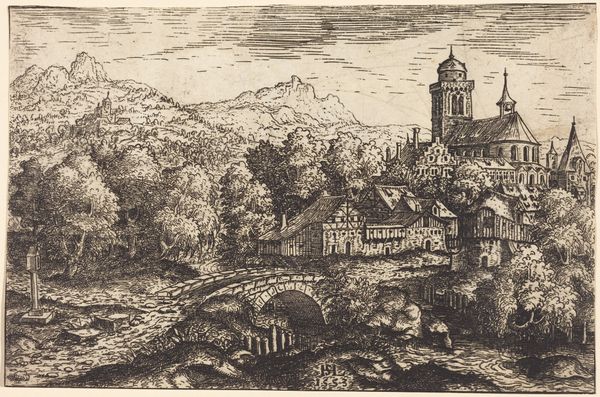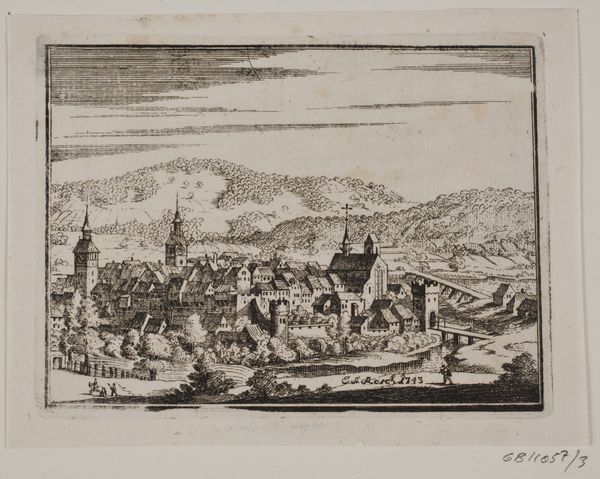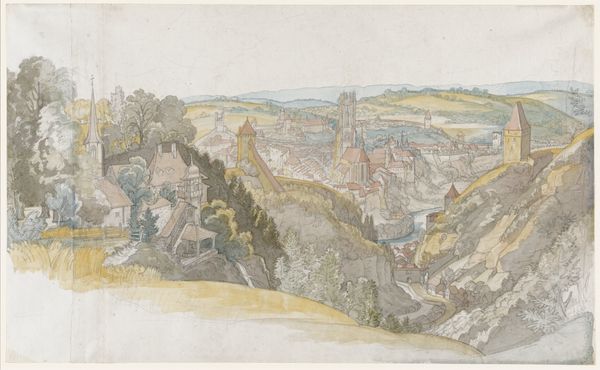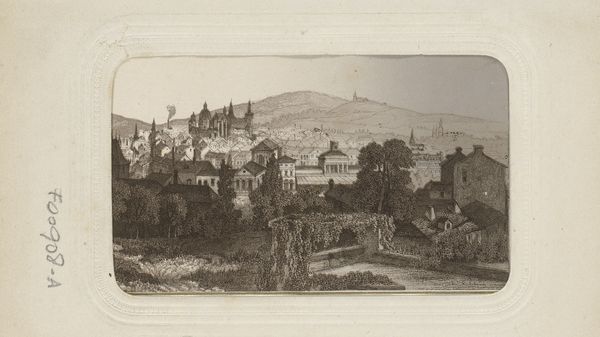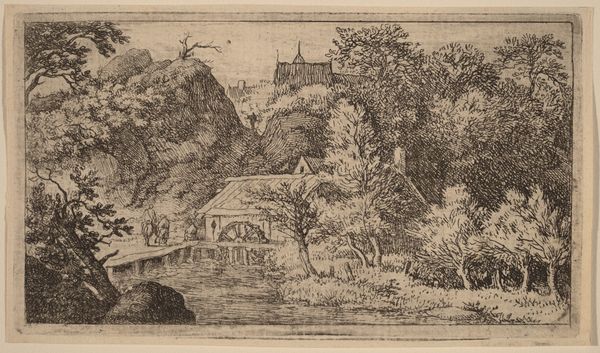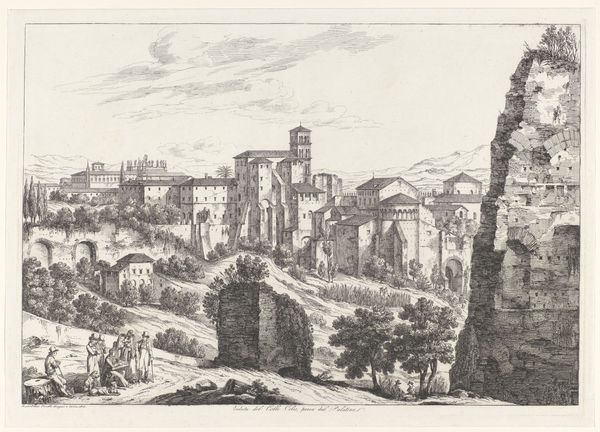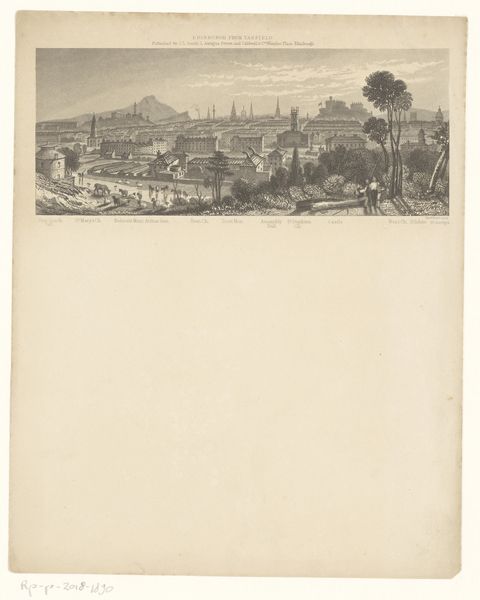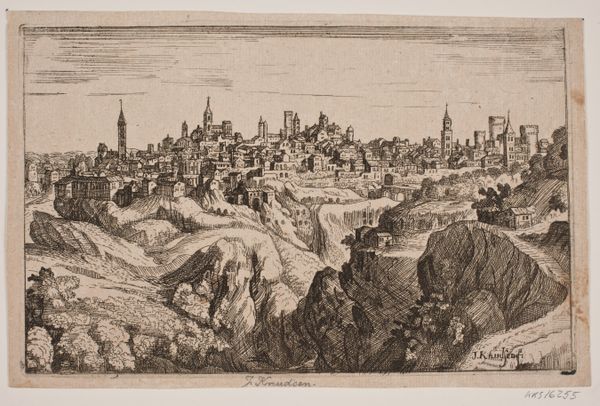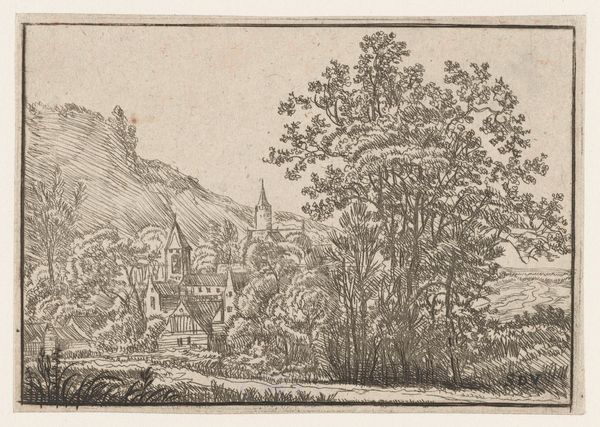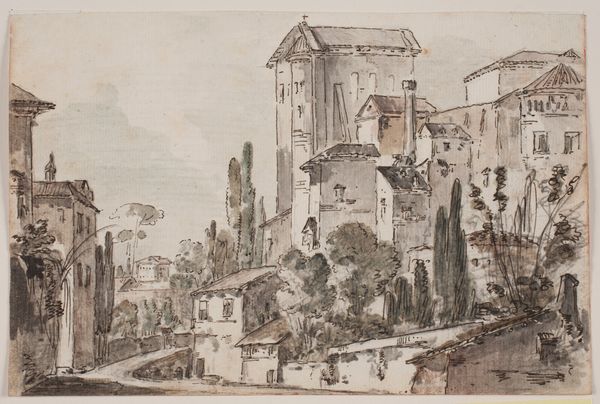
print, engraving
# print
#
landscape
#
mannerism
#
cityscape
#
engraving
Dimensions: sheet: 11.1 × 16.9 cm (4 3/8 × 6 5/8 in.) (trimmed)
Copyright: National Gallery of Art: CC0 1.0
Curator: Looking at this print, the first thing that strikes me is how intricately detailed it is. It’s almost overwhelming. Editor: And it invites you to explore it, doesn't it? We're looking at "View of Steyr on Enns," an engraving created in 1554 by Hanns Lautensack. Cityscapes like this one offer incredible insight into the economic and social structure of a place, even the ecological considerations of the time. Curator: Definitely. The towering church immediately positions religion as central. But even more so, that grand fortress to the left! You can sense the authority, the power… but it also feels remote, separate from the everyday life suggested by the other clustered buildings. It all feels very fortified. Editor: Yes, and look at how Lautensack balances the human construction with the organic forms of nature, framing the cityscape with the rugged foliage on the right. The very tree, in fact, bears witness, almost as a sentinel guarding over time itself! I feel that the very form of these roots mirrors those social entanglements. Curator: Right, that intersection between natural and constructed worlds is key here. The Mannerist style gives a heightened perspective on both those forces. It seems less interested in absolute realism than conveying an idea of the city, of civilization. Note how he’s prioritized line over shadow, rendering forms that have a very… performative reality. I'm fascinated by how art can act as propaganda and civic history simultaneously! Editor: And it is also fascinating how we tend to focus on a society’s elite! Yet, the image shows the flow of society through both material symbols, be that towers or roads, along with their psychic weight. Curator: I find it interesting that a style considered to be about heightened artifice actually communicates something very sincere here. It tells us about 16th century power, about landscape, and perhaps even about that moment of change as cityscapes evolved as representations, but as tools of propaganda and pride. Editor: I agree. And the power of visual emblems echoes through the centuries! Whether political symbols or even simply familiar architectural styles, what stays with us is that blend of personal recognition, coupled with an implicit social language of shared belief.
Comments
No comments
Be the first to comment and join the conversation on the ultimate creative platform.
